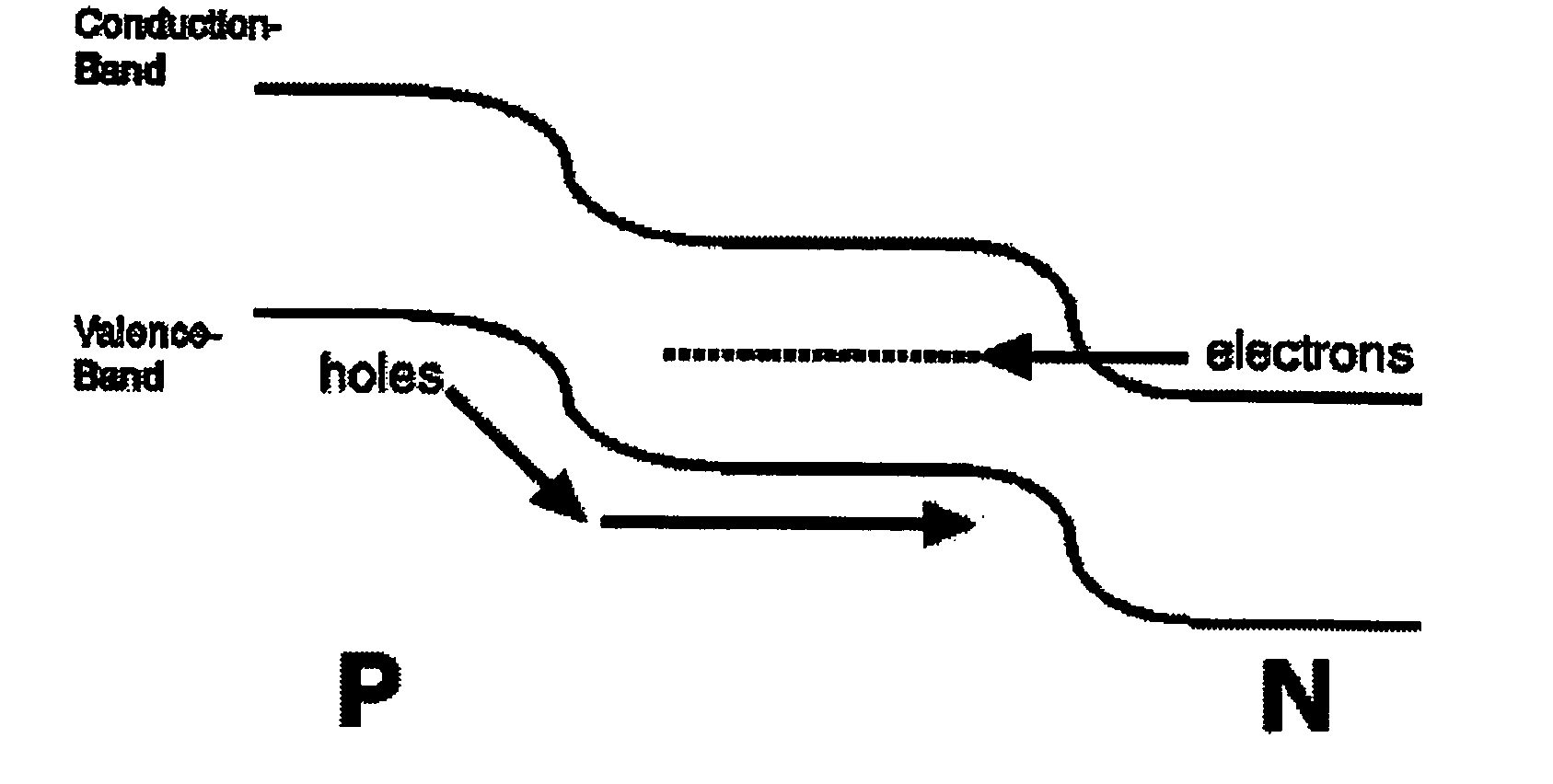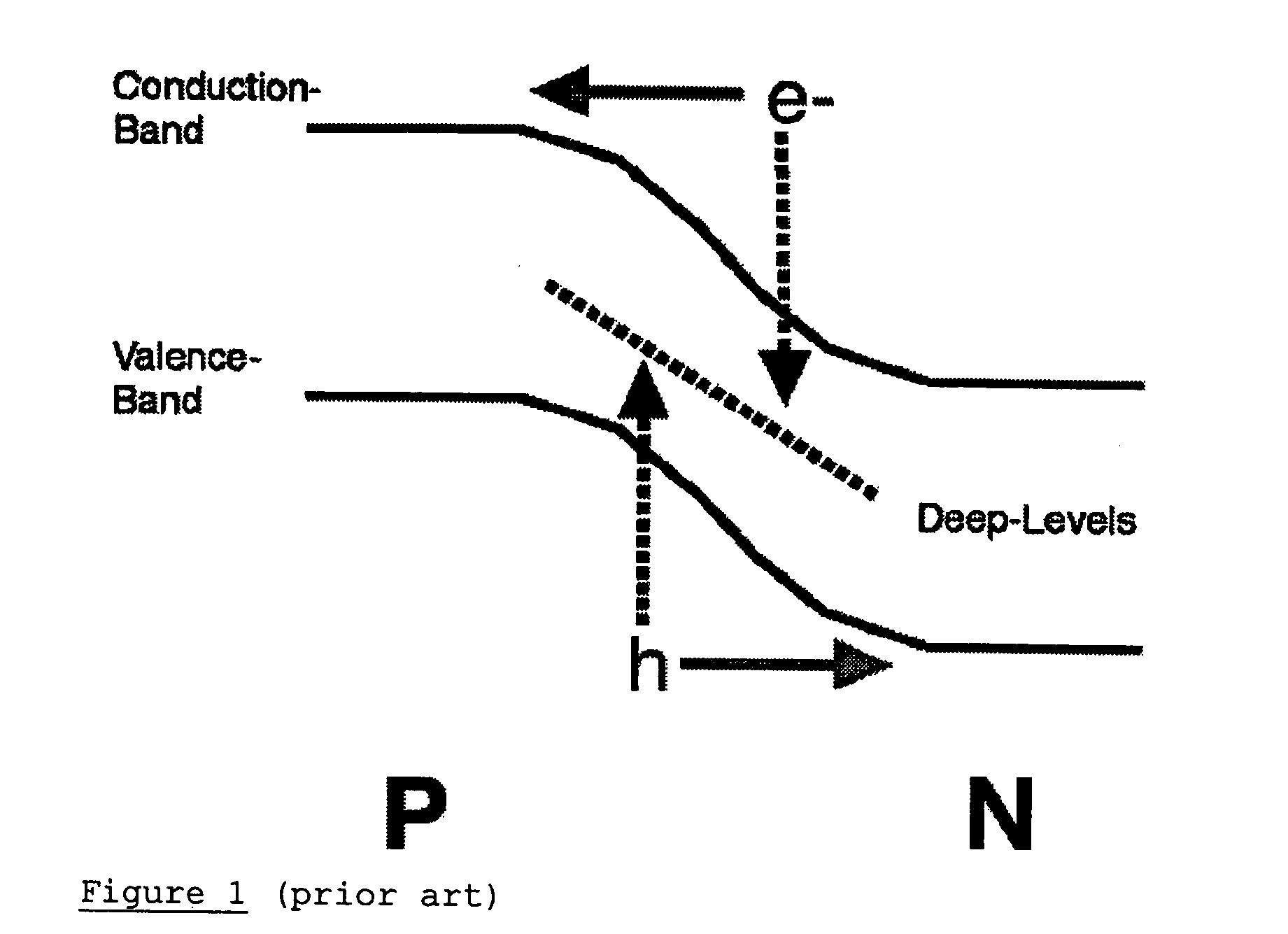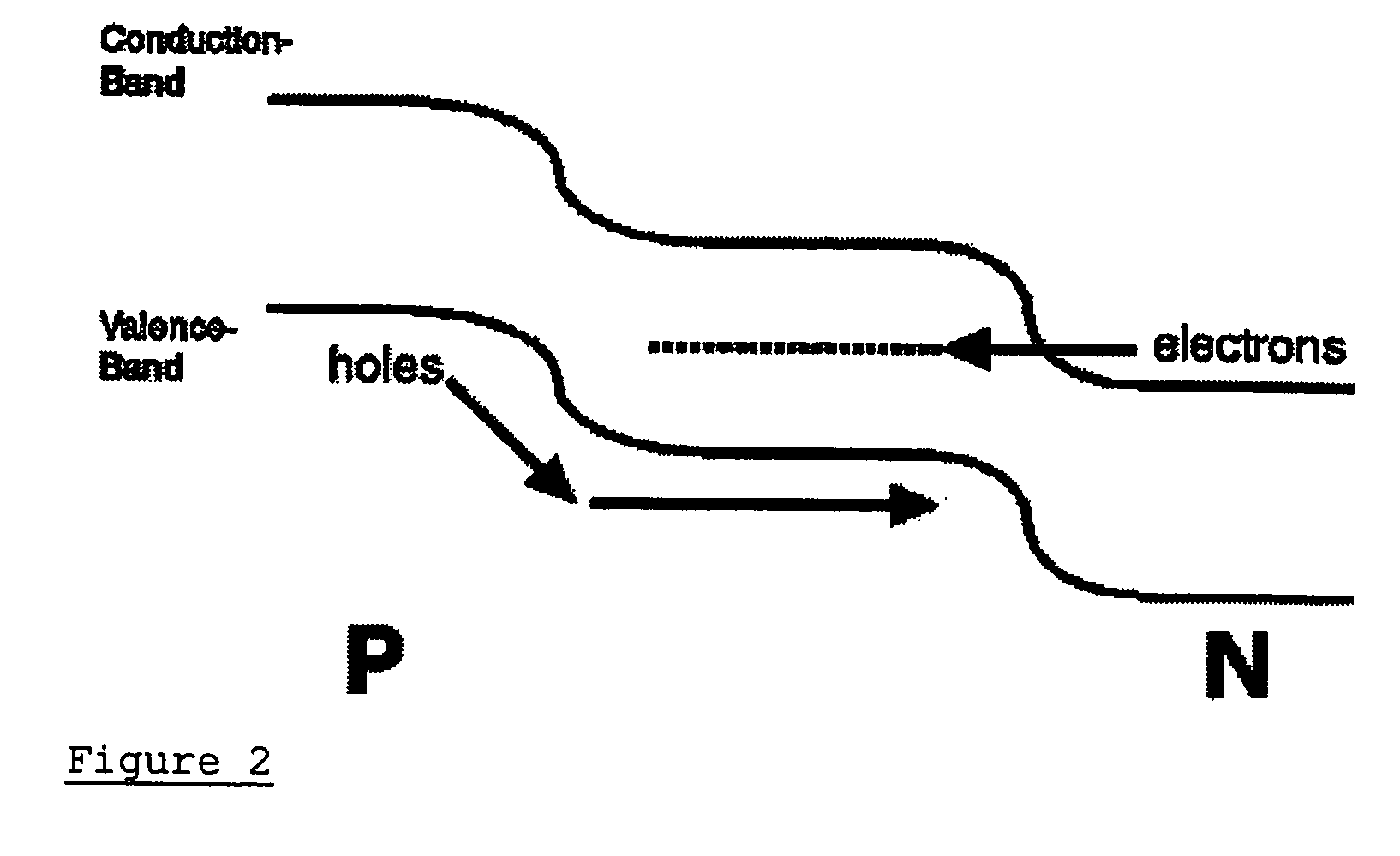Use of deep-level transitions in semiconductor devices
a technology of semiconductor devices and transitions, applied in semiconductor lasers, solid-state devices, semiconductor lasers, etc., can solve the problems of insufficient integration of inp circuits, high cost, and inability to actually put together parts of optical modules, and achieve the effect of “engineering” useful devices
- Summary
- Abstract
- Description
- Claims
- Application Information
AI Technical Summary
Benefits of technology
Problems solved by technology
Method used
Image
Examples
Embodiment Construction
[0043]Conventional behavior is illustrated in FIG. 1. In a conventional p-n junction, electron transport occurs through the conduction band, and hole transport occurs through the valence band. (This transport through a conventional p-n junction is indicated by the solid arrows.) In a conventional p-n junction, deep-levels act as nonradiative recombination centers. (This is indicated by the dotted arrows, which show the trapping by deep-levels of electrons from the conduction band and holes from the valence band.)
[0044]FIG. 2 shows a band diagram for an exemplary deep-level optical emitter. In this device, an optical transition occurs between the deep-level (indicated by the dashed line) and the valence-band. Electrons are injected into the deep-level from the n-type region, whereas holes are injected from the p-type region into the optically-active central region.
[0045]In FIG. 3, the efficiency of the deep-level optical emitter is improved through the addition of a Schottky contact ...
PUM
 Login to View More
Login to View More Abstract
Description
Claims
Application Information
 Login to View More
Login to View More - R&D
- Intellectual Property
- Life Sciences
- Materials
- Tech Scout
- Unparalleled Data Quality
- Higher Quality Content
- 60% Fewer Hallucinations
Browse by: Latest US Patents, China's latest patents, Technical Efficacy Thesaurus, Application Domain, Technology Topic, Popular Technical Reports.
© 2025 PatSnap. All rights reserved.Legal|Privacy policy|Modern Slavery Act Transparency Statement|Sitemap|About US| Contact US: help@patsnap.com



